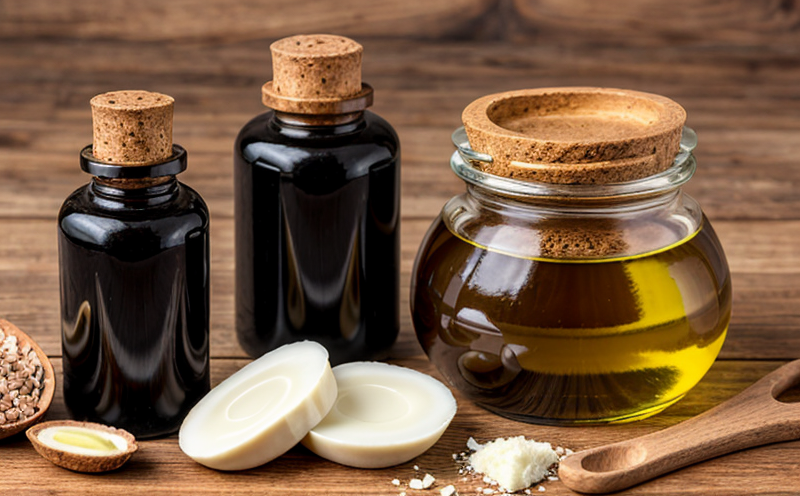AOAC 977.26 Acid Value Determination in Oils
The AOAC International Standard Method 977.26 is a widely recognized procedure for determining the acid value of fats, oils, and grease. This method is crucial for quality assurance in the food & feed sector as it measures the concentration of free fatty acids present in these products. Free fatty acids are often an indicator of rancidity or oxidative stress within the oil matrix.
The testing process involves a titration technique where potassium hydroxide (KOH) solution is used to neutralize the free fatty acids. The endpoint of this reaction is determined using phenolphthalein as an indicator, which changes color at the equivalence point. This method provides insights into the freshness and stability of fats and oils.
Understanding the acid value is essential for several reasons:
- To ensure compliance with industry standards such as ISO 6679:2014, which specifies methods for determining acidity in animal feedingstuffs.
- To maintain product quality and shelf life by monitoring the onset of rancidity.
- To enhance product safety by avoiding the use of oils that may pose health risks due to excessive free fatty acids.
The AOAC 977.26 method is not only a regulatory requirement but also an important tool for quality control and research in the food & feed industry. It helps manufacturers, researchers, and compliance officers make informed decisions about product formulation, storage conditions, and shelf life.
| Application | Scope |
|---|---|
| Determining the freshness of oils and fats. | Ensuring compliance with ISO standards for animal feedstuffs. |
| Monitoring storage conditions to prevent rancidity. | Facilitating quality control in food processing plants. |
Industry Applications
The AOAC 977.26 method finds extensive application across various sectors within the food & feed industry, including:
- Animal Feed Manufacturers: Ensuring that the fat content in animal feeds does not lead to health issues due to rancidity.
- Cooking Oil Producers: Monitoring the quality of cooking oils during storage and distribution to maintain consumer safety standards.
- Natural Product Formulators: Validating the purity and stability of botanical extracts that may contain fatty acids.
The method's precision is critical for maintaining product integrity, especially in sectors where rancidity can lead to significant quality issues. By implementing this test, companies can ensure their products meet international standards like ISO 6679:2014 and maintain consumer trust.
Customer Impact and Satisfaction
The implementation of the AOAC 977.26 method significantly impacts customer satisfaction in several ways:
- Enhanced Quality Assurance: By adhering to this standard, manufacturers can demonstrate their commitment to product quality and safety.
- Informed Decision-Making: Customers receive reliable data that helps them make informed choices about the products they purchase or use.
- Regulatory Compliance: Ensuring adherence to international standards like ISO 6679:2014 reduces compliance risks and potential legal issues.
Our customers, including quality managers, R&D engineers, and procurement teams, benefit from the consistent and accurate data provided by our AOAC 977.26 testing services. This leads to greater customer satisfaction and loyalty, as they can rely on the integrity of the products they sell or use.
International Acceptance and Recognition
| Standard | Reference |
|---|---|
| American Oil Chemists Society (AOCS) Method AOCS Cd 13d-04 | Complements the AOAC International Standard. |
| ISO 6679:2014 | Animal feedingstuffs - Determination of acidity and neutralization number. |
The AOAC 977.26 method is internationally accepted and recognized by various organizations including the American Oil Chemists Society (AOCS) and ISO. Compliance with these standards ensures that test results are reliable, consistent, and comparable across different regions.





